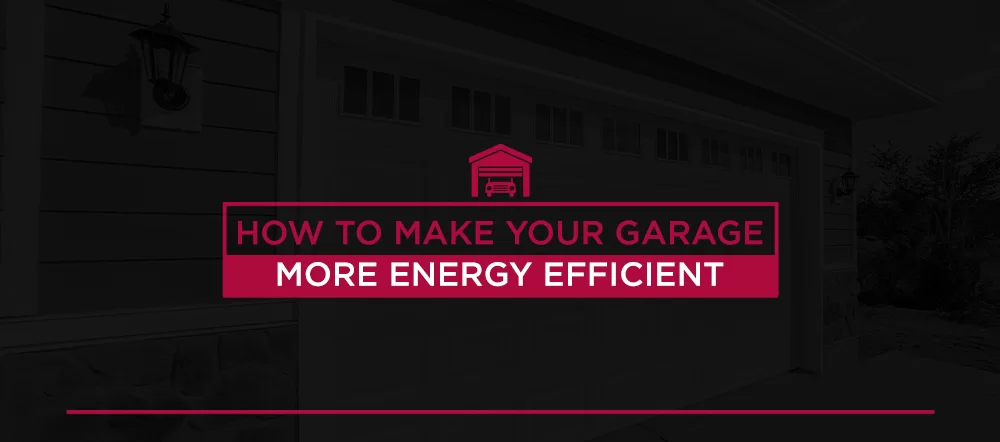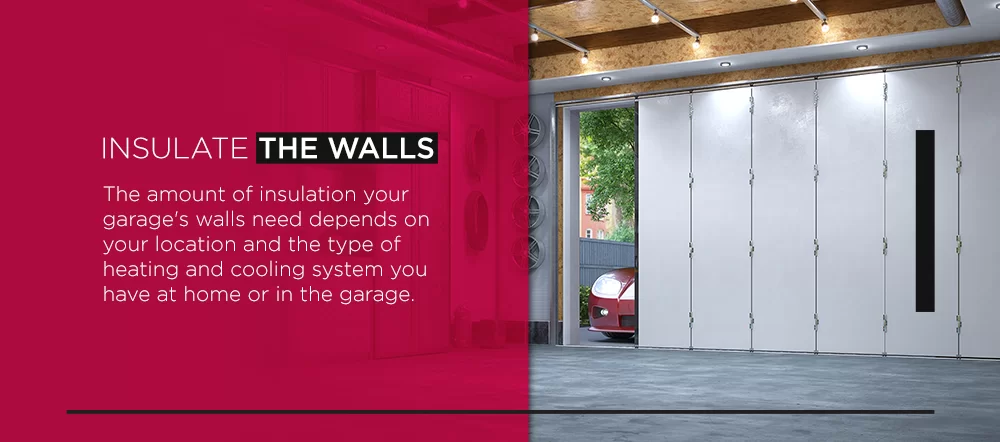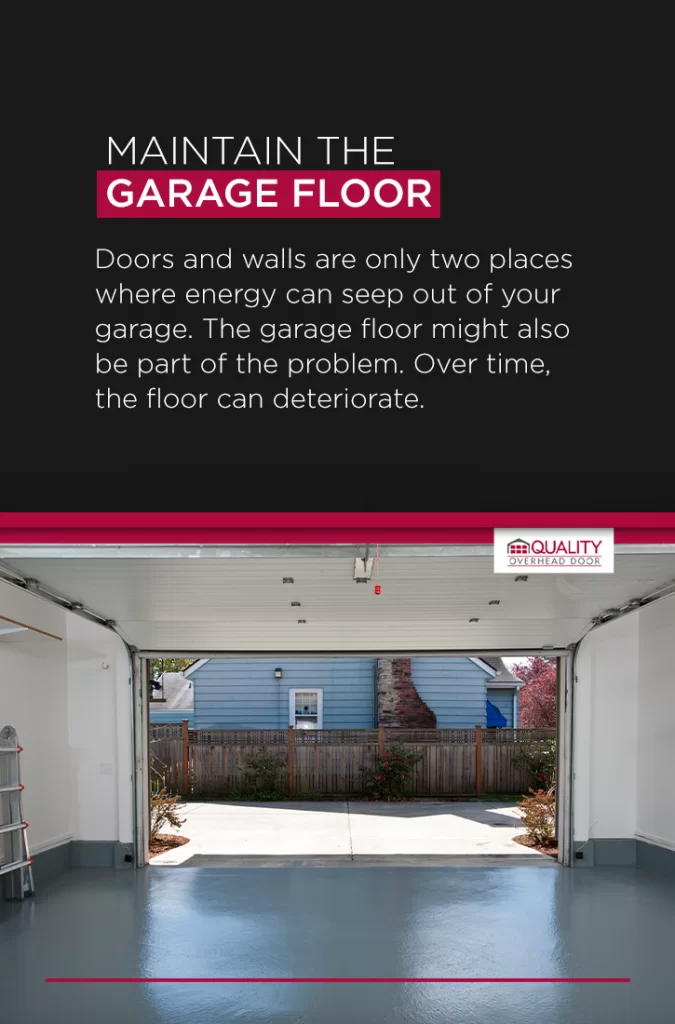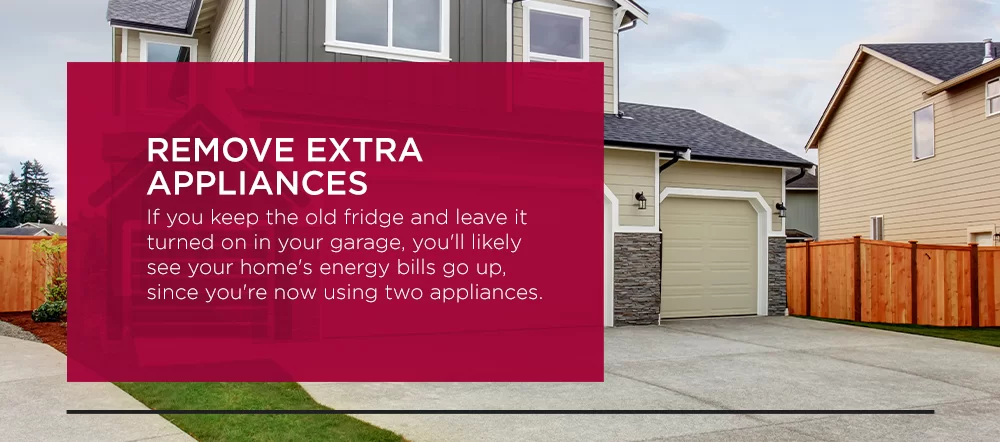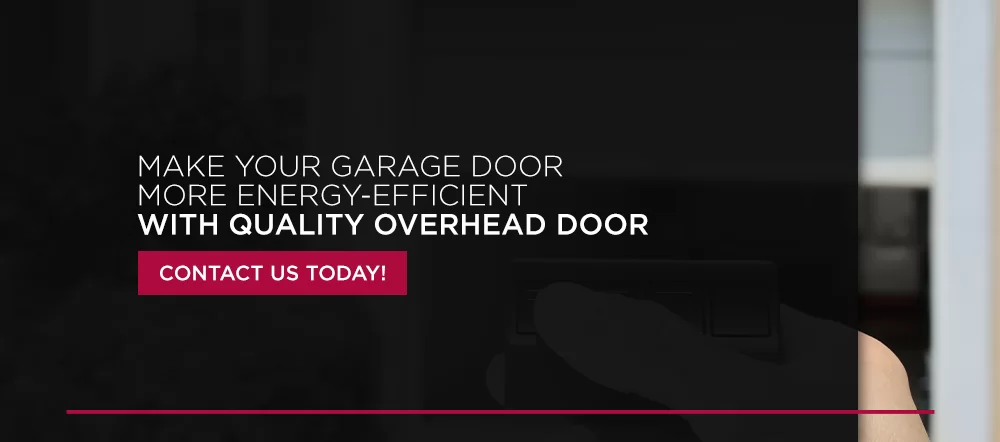In the winter, does it seem like your heating bills are higher than they should be? Do you feel as if your home’s air conditioner is constantly running in the summer? About half of the energy used by the average home in the U.S. goes toward heating or cooling the house.
Depending on a home’s overall energy efficiency, heating and cooling can leave you with a hefty energy bill. Your garage might contribute to the issue, especially if it shares a wall with the rest of your home.
Just as you’d take steps to improve your living area’s energy efficiency, it’s worthwhile to do the same to improve your garage’s efficiency. The less heating or cooling that gets lost through the garage, the lower your home’s energy bills will be. An energy-efficient garage is also better for storing delicate items, such as your vehicles, motor oil and lawn and garden tools. Below, we’ll show you how to make a garage more energy efficient.
Add or Improve Insulation
Insulation limits heat flow, making a room more comfortable and reducing the energy needed to heat or cool it. Heat flows in three ways:
- Conduction: Conduction refers to the transfer of heat through materials. If you place something cold on a hot surface, eventually the cold object will absorb some heat and become warm itself.
- Convection: Convection refers to the movement of heat through a liquid or gas. Warm air, which is lighter, rises. Cold air, which is heavy and dense, falls or sinks.
- Radiation: Radiation refers to the movement of heat in a line. As the heat travels, it warms up objects it comes into contact with.
Insulation reduces conduction and, in some ways, convection. Insulating your garage’s walls or doors will keep heat from seeping out of the space into the outdoors. If your garage shares a wall with the rest of your home, insulating this wall will keep heat from traveling from your living space into the garage.
Insulate the Walls
The amount of insulation your garage’s walls need depends on your location and the type of heating and cooling system you have at home or in the garage. A measurement called R-value describes the appropriate amount of insulation to use based on your climate and zone. If you Iive in Ohio, you live in zone 5.
If you want to insulate your garage’s walls, your best option is to buy insulative wall sheathing with an R5 or R6 rating. For best results, insulate the wall that connects to the rest of your home and the exterior walls of the garage.
Insulate the Garage Door
How can you make garage doors energy efficient? One option is to add insulation or replace an older door with an insulated option. Similar to insulating the walls, insulating the door reduces heat flow. Warm air will stay in your garage in the winter. In the summer, hot air will stay outside.
One of the other benefits of energy-efficient garage doors is that installing one can make your garage more secure. Without the right amount of insulation, you might be tempted to leave the garage door wide open in the summer, improving airflow. But a wide-open garage can be an invitation to thieves or curious passersby. Animals can also easily get into your garage when you leave the door open.
Install a Radiant Barrier
A radiant barrier is a type of insulation. You commonly see radiant barriers in home attics, but you can also install them in a garage. They help reduce heat gain, keeping your cooling costs in check.
While other types of insulation focus on reducing conductive and convective heat flow, radiant barriers reduce heat gain through radiation. Typically, they consist of shiny, reflective material. They rest perpendicular to the roof of a home or garage. If your garage has an attic, a radiant barrier can keep heat from traveling down into the rest of the space.
Upgrade Your Garage Door
A lack of insulation might not be the only issue with your garage door. This might affect your garage’s energy efficiency in other ways, depending on its style, age and overall condition. A damaged door, such as one with a dent or crack, can let cool or warm air into the garage. An older garage door might not create as tight of a seal when it closes, letting air in and out of the garage. If your garage door has windows, small openings or cracks around the windows might affect its energy efficiency.
Replacing a garage door might be your best bet if you notice your home’s energy bills have increased and the door no longer looks or functions as well as it did in the past.
Maintain the Garage Floor
Doors and walls are only two places where energy can seep out of your garage. The garage floor might also be part of the problem. Many garages have concrete foundations. Over time, the floor can deteriorate, usually due to two things. The first cause of cracks and damage to a garage floor is exposure to chemicals such as motor oil, antifreeze and other substances tracked in by a vehicle’s tires. The second cause of damage is poor initial installation.
For example, the salt that melts ice on roads can create fissures and pits on the floor’s surface. Sealing the floor with an epoxy coating will cover up the pits and cracks. Another option is to install garage floor mats on top of the area where you park. The mats consist of rubber and protect the floor from further damage.
If the floor is severely cracked or pitted, your best option might be to replace it with a new floor entirely. Once you’ve repaired or replaced the floor, get in the habit of cleaning it regularly. Washing away salt and other road-related chemicals will reduce the chance that cracks and pits will form, keeping the floor intact.
If you don’t use your garage for vehicle storage, another thing to consider is covering up the concrete floor with a material that provides better insulation. Carpet can add a layer of warmth and will help reduce heat loss.
Look for and Seal Off Leaks
Air can leak out of your garage from several points. Openings around electrical outlets and light switches allow air to flow in and out. Small openings along the edge where the walls join the ceiling or where the floor meets the wall can also affect the garage’s energy efficiency. You can detect air leaks by looking for dirty spots along the floor and ceiling.
To spot leaks near outlets or light switches, you can light a match and see if the flame flickers when you hold it near the outlet.
Once you’ve found the leaks, use caulking or weatherstripping to seal them up. The material will block the flow of air from the outside or from inside the garage to the outside.
Pay Attention to the Entry Door
Whether your garage connects to your home or is completely detached, the entry door — not the garage door itself — can affect the space’s energy efficiency. If you have a detached garage and people in your household tend to leave the side door open, warm or cool air will travel from the garage to the outside world.
A similar thing is true if the garage connects to your house. If people leave the door open, the climate-controlled air from your home will travel easily into the garage, potentially raising your energy bills.
Along with keeping the entry door shut, it might be worthwhile to seal around the door’s edge with caulk or weatherstripping. Depending on the door’s quality and age, you might consider replacing it. An insulated entry door will do a much better job of separating your living space from your garage compared to a hollow or traditional steel door.
Choose Energy-Efficient Windows
Not every garage has windows, but for those that do, these can be a prime spot for heat loss or gain. How much heat your garage gains or loses through the windows depends on the window positioning and quality.
If your garage’s windows face south or west, they will get more sunlight than north or east-facing ones. In the summer, or when the sun is particularly strong, a lot of heat can make its way through the windows, making your garage feel like an oven. This heat can travel into your home. A simple way to keep the heat out is to install blackout shades or curtains in front of the windows.
In the winter, you can leave the curtains or shades open to warm up the garage with the sun’s light. In the summer, pull them closed again to limit heat gain.
The windows’ quality can also make your garage too hot or cool, affecting your home’s energy bills. If the structure is older and has single-pane windows, it can be cost-effective to upgrade to more energy-efficient double-pane windows or storm windows. Caulking and weatherstripping around the window frames will also boost your garage’s efficiency.
Upgrade the Lights
While heating and cooling make up the bulk of the average home’s energy use, lighting also plays a part in electricity usage. If you haven’t yet replaced the incandescent lightbulbs in your garage with more energy-efficient options, now is a good time to do it. Lightbulbs that use less energy, such as light-emitting diodes (LEDs), do cost more upfront compared to incandescent bulbs. But they pay off in the long run in two ways. First, they use a lot less electricity, so your energy bill drops.
Second, they last much longer. An LED light left on 24 hours a day, seven days a week will stay lit for as long as three years. Once you switch to LEDs, you’ll enjoy lower electric bills and won’t have to worry about constantly replacing the lights in your garage — or elsewhere in your home.
Remove Extra Appliances
Replacing an older refrigerator with a new model can lower your home’s energy use. There is a caveat, though. If you keep the old fridge and leave it turned on in your garage, you’ll likely see your home’s energy bills go up, since you’re now using two appliances.
If you have an old fridge, chest freezer or other older, less-energy-efficient appliance in your garage, ask yourself if you really need to keep it and if you need to have it plugged in. While it might seem convenient to keep a fridge in the garage to keep drinks cold or store overflow groceries, you’ll save money and waste less food and energy if you stick to a single energy-efficient appliance kept inside your house.
Keep the Garage Organized
If your garage has turned into a room-sized junk drawer, it might be time to schedule a clean-up and clear-out. Keeping a lot of stuff in your garage, particularly food, can attract rodents and other pests. Those pests might chew through insulation, walls and doors, creating openings and affecting the garage’s energy efficiency. If this happens, your earlier efforts to add insulation and caulk openings in the garage will become fruitless.
A cluttered garage can also be less efficient in general, as boxes and piles of belongings impede airflow. Removing or donating these items can help you facilitate better airflow in this space.
An additional benefit of organizing and deep-cleaning your garage is that you might find objects you can sell to earn some extra cash. Depending on what’s in the garage, you might also stumble across something you thought was lost for good.
Practice Energy-Smart Habits
Insulating the walls and doors, sealing air leaks and tidying up are just a few things you can do to make your garage more energy efficient. You can also boost its efficiency by practicing energy-conserving habits.
Remember to switch off the lights when you leave the garage, for example. Keep the doors closed — both the main garage door and the entry door that connects to your home. If there are windows in the garage, leave them closed, too, especially in the winter.
If the garage isn’t air-conditioned, you might leave the windows open in the summer to increase ventilation. Remind others in your household to do the same. You might make a game out of it by keeping track of who remembers to turn off the lights and shut the door when leaving the garage.
Make Your Garage Door More Energy-Efficient With Quality Overhead Door
If it’s time to improve your garage’s energy efficiency, Quality Overhead Door is here for you. We have a wide range of garage doors, including insulated options, to help you better manage your home’s energy bills and improve your garage’s quality and comfort. Browse our selection of garage doors to find one that can meet your needs and will enhance your home’s appearance and curb appeal.
To learn more about specific doors or product lines or schedule an estimate, contact us today or visit our showroom in Toledo, Ohio.
Additional Resources On Garage Doors:
- Garage Door Lighting Ideas
- Common Residential Garage Door Sizes
- Popular Home Styles in Ohio and Michigan

